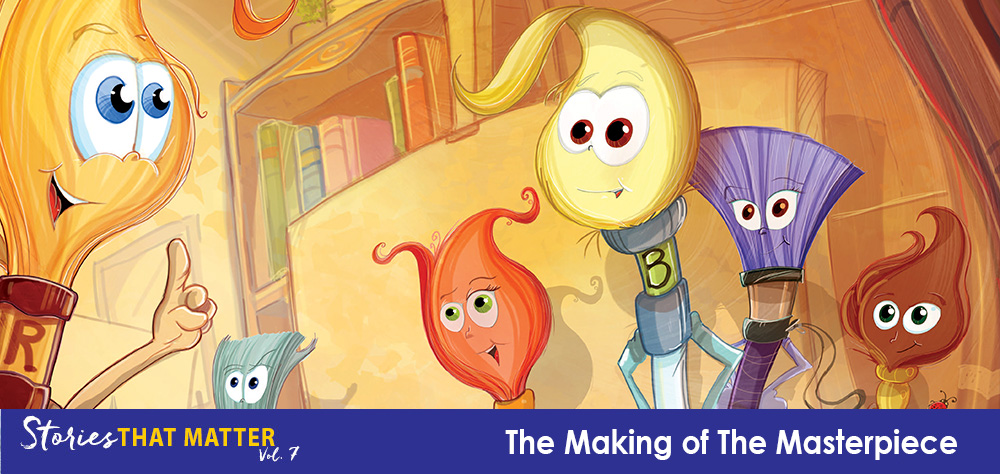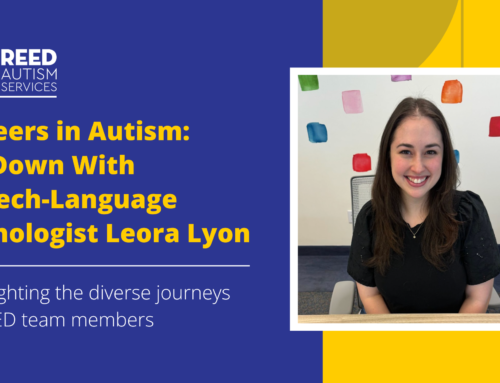New book series aims to spread a message of acceptance and understanding, through colorful characters and collaborative plots.
Sometimes the most effective way to get a message across is through storytelling. That is the idea behind the REED Foundation for Autism’s new book collection, “One Big Canvas”. Each illustrated work tells a story of acceptance and understanding through the use of colorful characters—literally. The protagonists of the first book, The Masterpiece, are paintbrushes, each with a personality and creative approach all their own.
The author, Jay Miletsky, has made a name for himself using metaphor in children’s books, which is what caught the idea of the REED team. Miletsky’s first book, Ricky, the Rock that Couldn’t Roll, was about a rock who didn’t roll like other rocks (and who represents children who can’t walk and run like other kids). “I took the same approach here,” he says, in describing The Masterpiece. “The REED team wanted this book to be a conduit to help kids understand autism. I came up with the idea of paintbrushes in all different sizes, colors, painting styles, and purposes. I could show the different behavioral aspects of autism, and also show how others respond.”
Once the concept was in place, Miletsky knew he needed an illustrator who could share his vision. “As soon as I completed the manuscript, I knew that I wanted Luis Peres to illustrate it,” he says. “He is one of the best illustrators I know when it comes to working with color and making vibrant-looking spreads. Of course, I loved everything he did from the second that I saw it. He gave this story a Disney-esque feel that really brought the paintbrushes to life.”
The elements were in place for a story that would resonate with children—but because autism is a highly misunderstood neurological disability, the REED team also wanted to make sure The Masterpiece was accurate from a clinical perspective. Crucial to the development of the series were REED clinical advisors, Kelli Fowler, Clinical Director, and Joe Novak, Director of Curriculum and Technology. “We know that it’s hard when you are talking about this particular disorder, because it doesn’t have physical characteristics that are easily distinguishable,” says Fowler, who notes that Miletsky captured the nuances without focusing on specifics. “I was blown away by the story’s depth and message that celebrates differences.”
The plot of The Masterpiece is simple, yet heartfelt: In it, a group of paintbrushes approach a collaborative painting project differently—some swirling around the canvas, others focused on
particular colors. At first glance, it appears that some paintbrushes aren’t cooperating—but then it becomes clear to all that each is contributing to the whole in their own unique way.
Miletsky spoke with numerous families in the autism community while developing the book, and he says the experiences they shared helped inform his work. “What parents really want is for others to understand and accept and be kind to their children with autism,” he says.
Beyond the autism community, The Masterpiece showcases how each individual, regardless of his or her own unique qualities, can be an integral part of a much larger picture. “From a clinical standpoint, we considered what was important for people to know about how diverse the autism population can be, and how their characteristics can actually bring something to our world,” says Fowler. “But that desire for acceptance and understanding doesn’t just resonate with the autism population.” The ultimate goal is to promote kindness towards all individuals. REED is planning special readings in elementary schools, and has developed companion Teaching Guides, so that educators can introduce this topic in class.
The second book in the collection is sure to be just as impactful. In The Molding of Clay, the paintbrushes meet a lump of clay (named Clay) who doesn’t understand their differences, or why they behave the way they do. “By the end of the story, he molds his way of thinking,” explains Miletsky.
As the team anticipates the overall impact the series will have, they reflect on what makes the first book so meaningful. “The idea is to embrace imperfection!” says Novak. “People tend to get upset when things aren’t as expected, but sometimes that variation and difference make it better. The Masterpiece celebrates the advantages of differences.”
The Masterpiece is available on Amazon.







